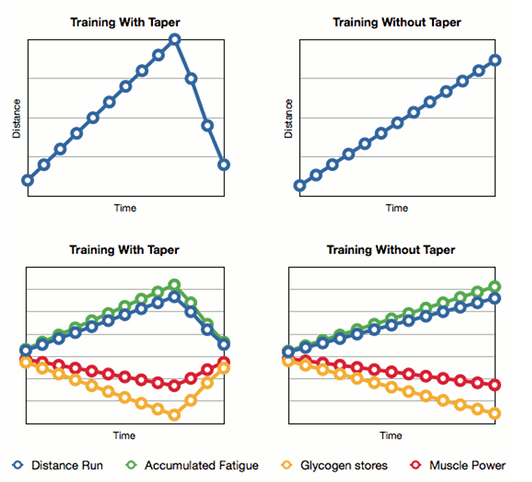SMART Running Goals
Many runners fall into the routine of running for maintenance – running to “stay fit” – but, inevitably, maintaining fitness level often means having to introduce challenges by increasing training load. Think of it as the amount of stress we undertake while preparing for a race.
A great resource for understanding adaptation to exercise is Thomas Fahey’s article on progressive resistance training. According to Fahey, the whole point of exercise is to teach our body how to respond when it gets tired. He also makes it very clear that the amount of exercise we do should be “sufficient to stimulate adaptation, but not so severe that breakdown and injury occur.”
Know Your Current Fitness Level
Before you can push your limits, you’ll first need to know what they are so it’s a good idea to do a baseline fitness test before you set any short or long-term goals.
Depending on your personal running goals, you might decide to perform one of three things to assess your current fitness level: (1) run a Cooper Test, (2) run or walk your fastest mile, or (3) run, jog, or walk for a set amount of time or distance. Write down the results of your fitness “test” and put it somewhere visible as a constant reminder.
Because this is supposed to be your baseline fitness level, you’ll want to choose a good day to set it. Don’t run during the warmest time of day or after a rough night of sleep. Don’t set your benchmark on a treadmill unless your final test will also be on a treadmill (instead of a road race).
Set Realistic Goals

Effective goal setting inherently improves athletic performance. As long as your goals are specific, measurable, attainable, relevant, and timely (S.M.A.R.T.), you can be in a position to achieve them.
You should also avoid the most common mistakes with goal setting and remember these tips!
- Be prepared to adapt and modify your training plan as needed.
- Generic goals are much easier to deviate from, whereas specific goals will keep you accountable.
- Remember to evaluate yourself along the way. Track your runs.
- Only set 2-3 goals at a time to keep it within your control.
- Lean more towards goals that are performance-based instead of focusing solely on overall outcome.
For example:
[Outcome]: I run my first 5k.
[Performance]: I jog for 15-20min at least 3x/week.
[Outcome]: I sign up for a half marathon.
[Performance]: I run at least 25 miles every week.
Write down your goal on something you can post on your refrigerator, stick to the edge of your computer monitor, or tape to your bathroom mirror. It’s your motivator, and seeing it constantly will assist you in your training.
Your Goal Setting Worksheet
Set your baseline running fitness level. It can be your fastest mile, your best Cooper Test, the longest distance you can currently run, or the longest time you can run continuously at a specific pace. Just be specific.
Write down your metrics for measuring improvement. Sometimes, it helps to have a calendar where you can physically cross off days or write down what you did on a certain day!
Remind yourself why this is a realistic goal. Think of your recent running accomplishments and your best runs.
Anchor your short-term goals to a lifetime running goal. It will help consolidate all of your milestones and enable you to reach much larger goals that might otherwise be difficult to achieve – like running the Boston Marathon.
Set a deadline. Constraints bring out our competitive nature. It’s like running with a GPS watch and being able to check your pace vs. running without a watch and not caring as much about how fast you’re running.
Good luck!

